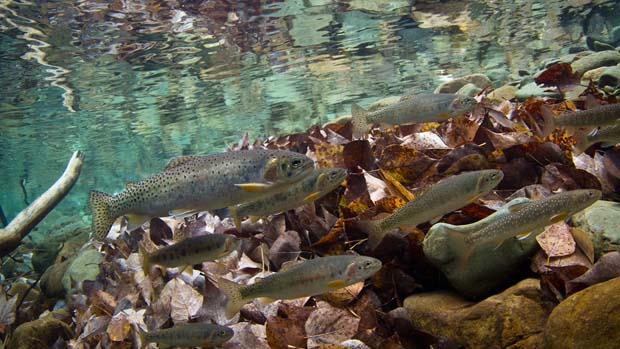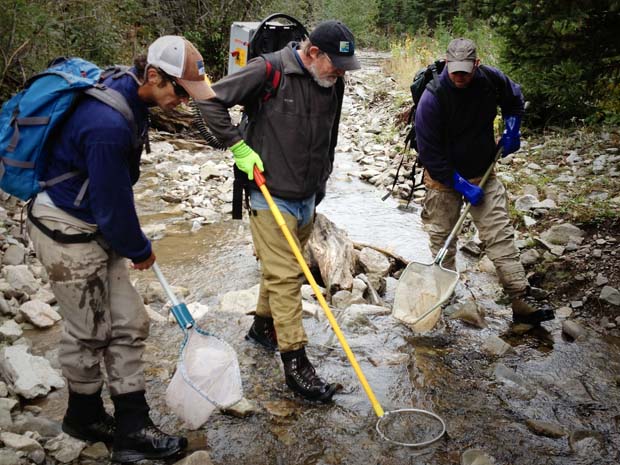![]() By Christopher Joyce – National Public Radio
By Christopher Joyce – National Public Radio
In the mountain streams of the American West, the trout rules. People don’t just catch this fish; they honor it. And spend lots of money pursuing it . . .

Native Westslope cutthroat trout and bull trout swim in the Flathead River near Glacier National Park, Montana.
Photo by Jonny Armstrong/USGS, via npr.org
[dropcap]B[/dropcap]ut some western trout may be in trouble. Rivers and streams are getting warmer and there’s often less water in them. Scientists suspect a changing climate is threatening this iconic fish.
I joined two such scientists from the U.S. Geological Survey as they drove up a mountain road in Montana, in the northern Rockies, a place dense with stands of Douglas fir and aspen trees and braided with mountain streams.
Here, wildlife is part of daily conversation. “I shot an elk maybe like three miles up that drainage,” says Clint Muhlfeld as he negotiates a narrow dirt road. He and fellow fish scientist Robert Al Chokhachy trade hunting stories to pass the time as we climb higher toward a trout stream they’re studying. Today it’s not elk they’re looking for, but native cutthroat trout.
They’re studying the trout’s world, which is changing radically as the climate warms. The region has seen record droughts and declining winter snowpack, which means measly stream flow after the spring melt. The water is also warmer these days in the streams.
To understand what that means to a trout, the scientists get in the water with them. We stop by a tiny creek, whose waters eventually end up in the Yellowstone River, and struggle into hip boots as Chokhachy explains how it’s done. “We’re going to be using electricity to shock fish,” he says. “And then we capture them and we put in these little individual tags.”
The tag is a tiny transmitter known as a pit tag, about half the size of a match-stick. They put them inside each fish they catch. Then the fish go back into the stream. “What we’re trying to do is look at the specific effects of climate on cutthroat trout in one of their northernmost strongholds,” says Chokhachy.
It’s a speckled, cold water fish with iridescent gold and pink skin. The young ones here are just three inches long but they’ll grow to a foot or more. Fishing in Montana generates about $250 million a year and the majority of that is from trout. And yes, they taste great. Mild and a little earthy.
These scientists will track and re-catch these fish for years, following their lives, their growth rate, mortality rate, even how they die.
To read complete story, or to listen to the NPR broadcast click here […]






